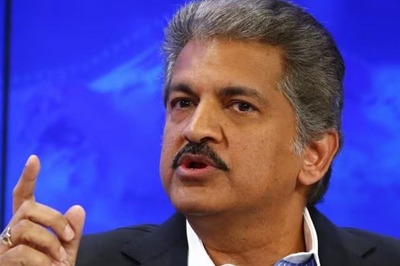
views
The direct to home (DTH) service providers are busy fine-tuning the tariff packages as part of the ongoing changes following the implementation of the Telecom Regulatory Authority’s (TRAI) New Tariff Order earlier this year. As part of the new guidelines, TRAI set a price ceiling on the pricing of individual channels and a bouquet of channels, among other measures intended to bring down the television subscription bill for consumers. DTH companies including Tata Sky, Dish TV, D2H and Airtel Digital TV have now announced changes to the multi-tv policies for their consumers. Multi-TV is the scenario where you may have more than one set top box (STB) linked to the same subscriber ID. In most cases, DTH companies tend to discount the subscription cost you pay for the multi-tv subscriptions. As things stand though, not all multi-tv packages are the same as others.
One of the reasons why the DTH subscriptions are now a tad more complex to break down is because of the addition of a new component called the network capacity fee (NCF). This is a part of the new regulations as drawn by TRAI, for dictating the pricing and subscriptions for cable TV and DTH connections. At present, the NCF is calculated at Rs 130 plus taxes for the first 100 channels that you select, and then an additional Rs 20 for every 25 channels you add to your subscription. Till now, cable TV and DTH subscriptions did not have any NCF element.
If you have a multi-TV subscription from Tata Sky or intend to buy a Tata Sky connection for more than one TV at your home, you will have access to some rather interesting offers. But what comes as standard fare with that is some amount of complication.
First, you need to understand what you need to subscribe to on the primary set top box (STB), for the discounted pricing to work for the other STBs connected to other TVs in your home. Tata Sky’s subscription structure says that you are free to choose any channels, curated bouquets or broadcaster bouquets to make up your subscription. Tata Sky will then look at the final amount of the packs and channels you have chosen, and determine the pricing for the other STBs linked to the same subscriber ID.
Important to note that this calculation is done on the pricing of the channel selection and does not include the NCF amount. If your primary selection of channels is up to Rs 100, you will pay Rs 150 for each of the multi-tv connections you have also have. If the primary selection is up to Rs 200, you will pay Rs 200 for the multi-tv connections.
This is where the discounts kick in. If you subscribe to channels up to Rs 300, then you pay Rs 250 for multi-tv connections. If you have selected channels up to Rs 400, then you pay Rs 300 for the additional connections. If your channel selection is up to Rs 500, you’ll pay Rs 400 for multi-tv, for channels up to Rs 625, you pay Rs 500 and for subscriptions up to Rs 750, you will pay Rs 600 for every multi-tv subscription you may have. The final tier is for those who put together channels and packs costing more than Rs 750, then you pay Rs 700 for multi-tv.
However, this is where things become a bit more complex. If you subscribe to one of the Tata Sky Curated base packs for your primary connection, you will get the same at a discount for the multi-tv connection. At present, there are six Tata Sky base packs that are available as a part of this discount scheme for multi-tv. The Hindi Lite Pack with 53 channels which is priced at Rs 295 for the primary connection will additionally cost Rs 150 for multi-tv connections. The Hindi Basic Pack with 72 channels which costs Rs 334 is available on multi-tv additionally for a discount at Rs 150. The Family Kids Pack which has 90 channels for Rs 365 per month will be available for multi-tv at Rs 200 per month. The Family Sports Pack (Rs 456 per month for 90 channels), the Family Kids Sports pack (Rs 464 per month for 98 channels) and the Premium Sports English (Rs 522 per month for 123 channels) are all individually available at Rs 300 per month for multi-tv connections.
Interesting to note that none of these are HD packs, which means anyone who wants HD channels will have to still rely on add-on packs over and above these base packs, or give these base packs a complete miss and subscribe to a combination of ala-carte channels and channel bouquets.
This comes at a time when rivals Dish TV, D2H and Airtel Digital TV have also reconfigured the multi-TV subscription plans as part of the ongoing changes to subscription options post the implementation of the new tariff order earlier this year. At the same time, DTH companies are facing a threat from a phenomenon known as cord-cutting, where subscribers are giving up on linear TV subscriptions altogether, and subscribing to OTT services for streaming Live TV, movies, TV shows and more.


















Comments
0 comment